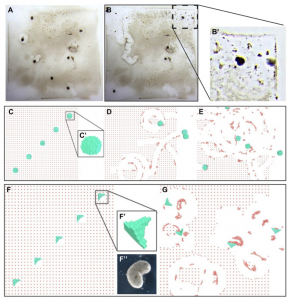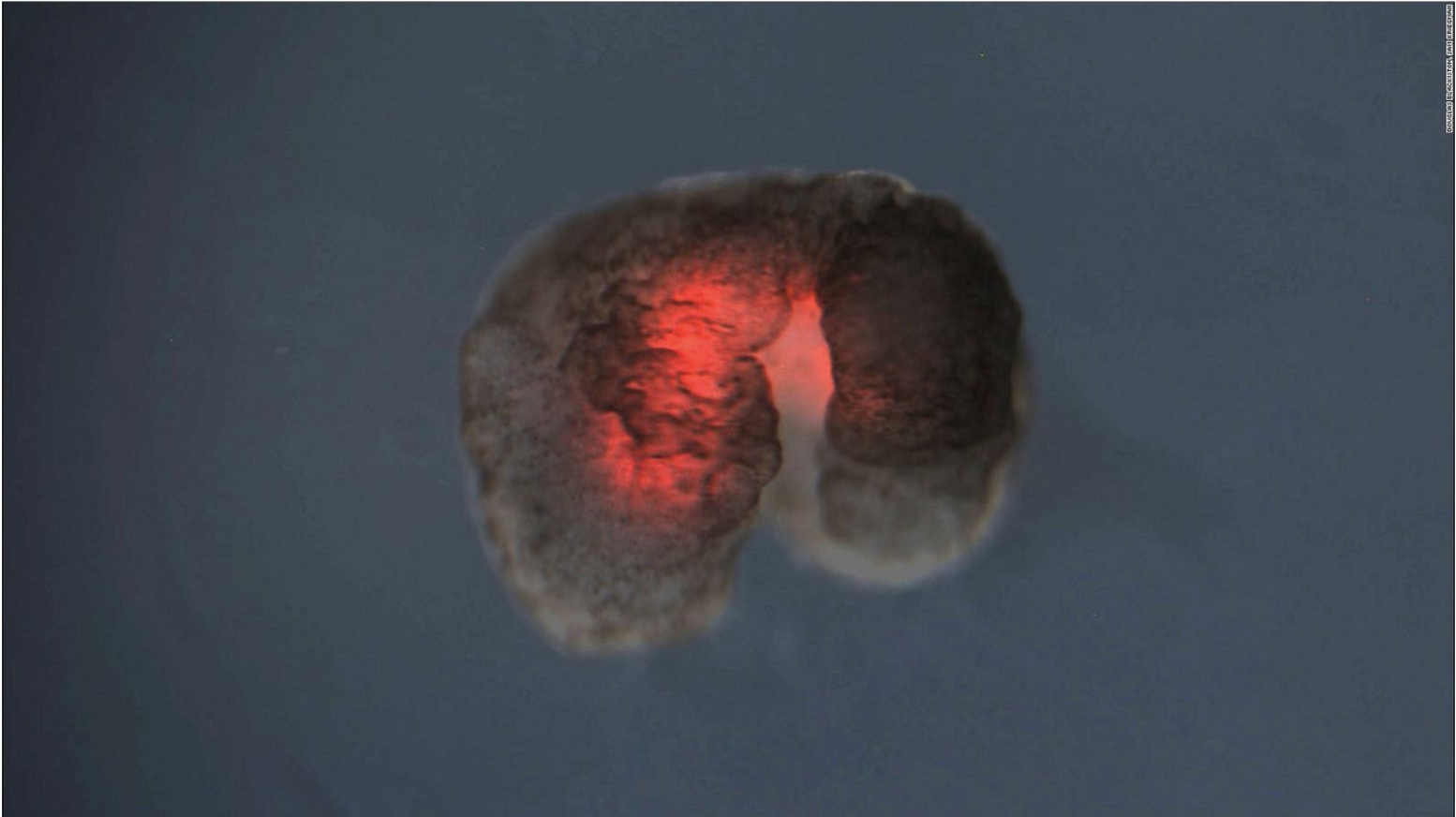Artificial intelligence and advanced biomedical research now have the capability to produce remarkable innovations in science. From the invention of the wheel to the creation of life itself, humanity has moved far into the future of tomorrow. Looking into the realm of nanotechnology, scientists have pioneered a novel generation of artificial living cells. Created not by nature, but by machine.
Introducing; Xenobots.
Living Machines
Xenobots are an engineered collection of cells that have developed tendencies to gather and pile cells to reproduce. They are able to move around, replicate, and regenerate when injured. The design of a Xenobot was created by a machine learning algorithm, with the body of a Xenobot composed of cells harvested from the embryonic cell tissue Xenopus laevis of frog eggs. Scientists dissect specific parts of the cell tissue and arrange them together, creating a mix of skin cells and heart muscle cells that develop the ability to move.
Futuristic, right?
These cells do not have the ability to replicate from mitosis or meiosis, which is how cells normally divide. Rather, they are able to grow using organic material that is placed nearby. When placed near other skin cells, the Xenobots are able to maneuver themselves to gather the cells in a pile, which then adheres to the other cells, increasing in size. Surprisingly, the cells initially grouped together by the Xenobot aid in making more piles once the Xenobot starts to move, mimicking the tendencies of the previous generations before them. When Xenobots become a large enough mass of cells, they develop cilia after a few days. Cilia are tiny hairs required for movement. From here, they continue to maneuver themselves and make new piles by gathering other frog skin cells together in clusters. Xenobots repeat this process until the end of their life and effectively reproduce, continuously growing their colony. If Xenobots are harmed anytime during their lifespan, they are able to regenerate themselves and live undisturbed, which makes them impressive self-regenerating biological nanomachines.
Digital Reality to Organic Life
The craziest catch about these bots? A computer algorithm designed it.

(Blackiston et al. A cellular platform for the development of synthetic living machines.)
As scientists modeled the earlier designs of the Xenobots, other design cases of Xenobots were rendered ineffective. Scientists originally used spherical Xenobots, but these died out only after a single generation of creating new bots. Spherical Xenobots did not have enough surface area to collect and pile cells together effectively. However, when the model was put through a computer algorithm with billions of digital test cases, the algorithm determined that a C-shaped Pac-Man-like body was the most efficient way for Xenobots to maneuver while creating more generations of bots in their lifespan. It would take millions of cells in the small opening of its “mouth” and pile them together to create a new line of young Xenobots, creating a new generation of living artificial machines.
The future
Xenobots can be used in many research fields, such as being used for precise drug delivery in humans and aiding in the acceleration of waste management processes. Xenobots have a variety of special abilities, including self-regeneration, emergent group behaviors, and the navigation of aqueous environments. Scientists hope to discover and innovate on the abilities of these Xenobots, with the potential for tissue engineering and STEM cell research development. But first, scientists hope to draw clear ethical guidelines and considerations of these Xenobots, asking fundamental questions such as;
What makes an organism?
What are the implications of these little creatures?
To what extent can we use Xenobots of our own accord?
Science still has much to answer, as research on Xenobots is ongoing.
However, the future looks bright for these tiny warriors.
References:
- Ball, P. (2020). Living robots. Nature Materials, 19(3), 265–265. https://doi.org/10.1038/s41563-020-0627-6
- Blackiston, D., Lederer, E., Kriegman, S., Garnier, S., Bongard, J., & Levin, M. (2021). A cellular platform for the development of synthetic living machines. Science Robotics, 6(52). https://doi.org/10.1126/scirobotics.abf1571
- Stanley, K. O. (2007). Compositional pattern producing networks: A novel abstraction of development. Genetic Programming and Evolvable Machines, 8(2), 131–162. https://doi.org/10.1007/s10710-007-9028-8
- Werner, M. E., & Mitchell, B. J. (2013, January 1). Chapter Ten – Using Xenopus Skin to Study Cilia Development and Function (W. F. Marshall, Ed.). ScienceDirect; Academic Press. https://www.sciencedirect.com/science/article/pii/B9780123979445000109
